
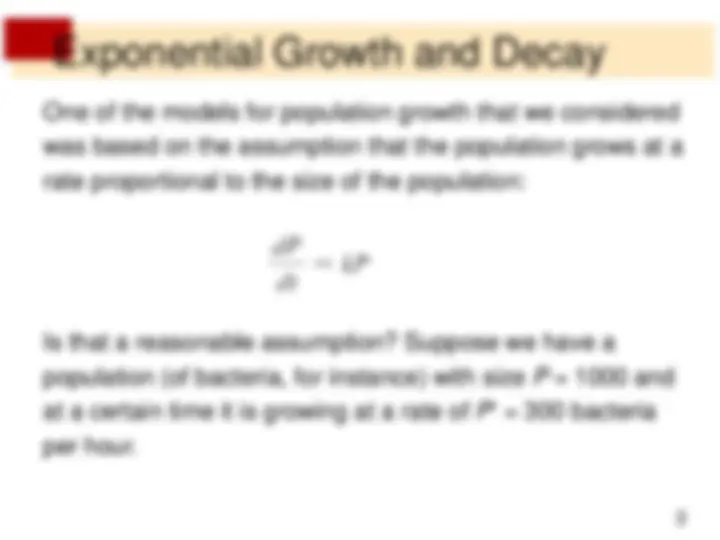
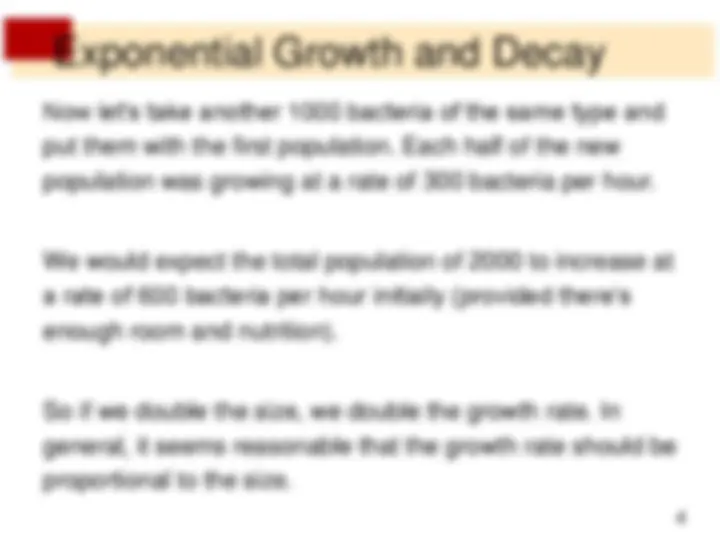
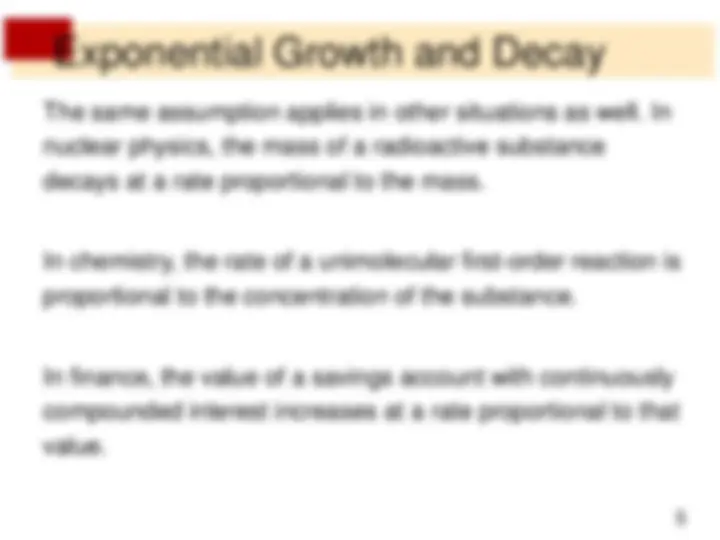
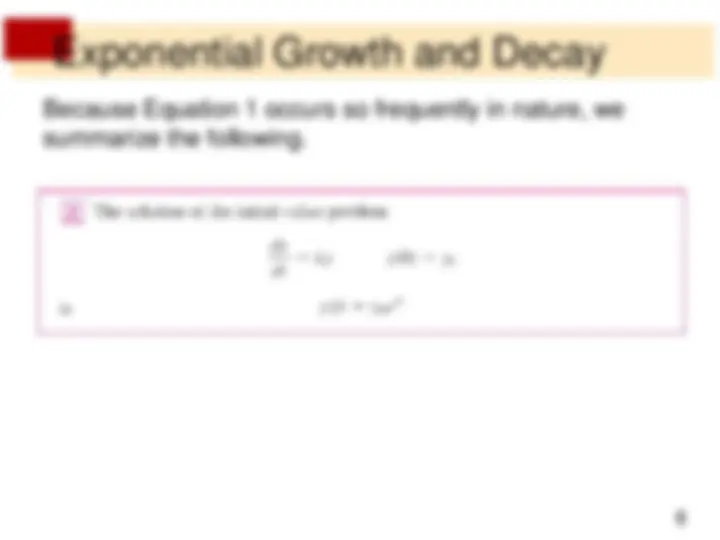
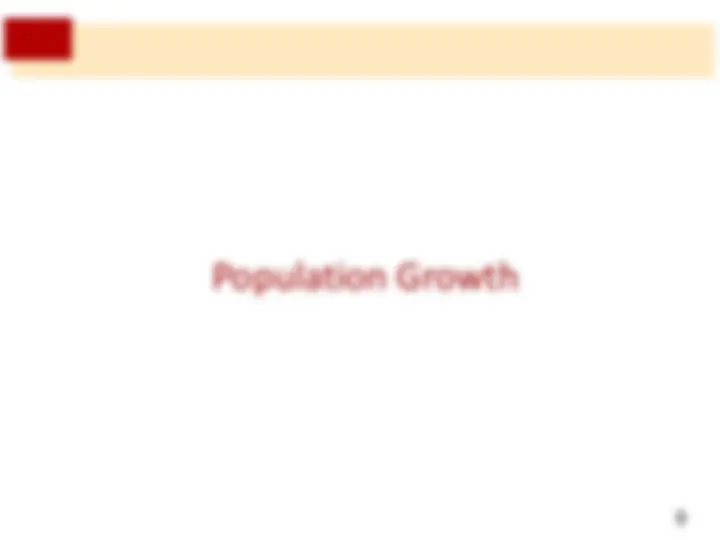
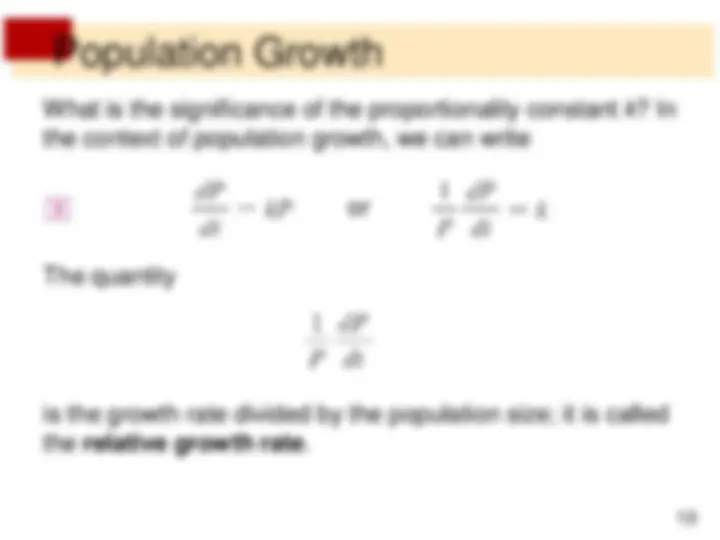
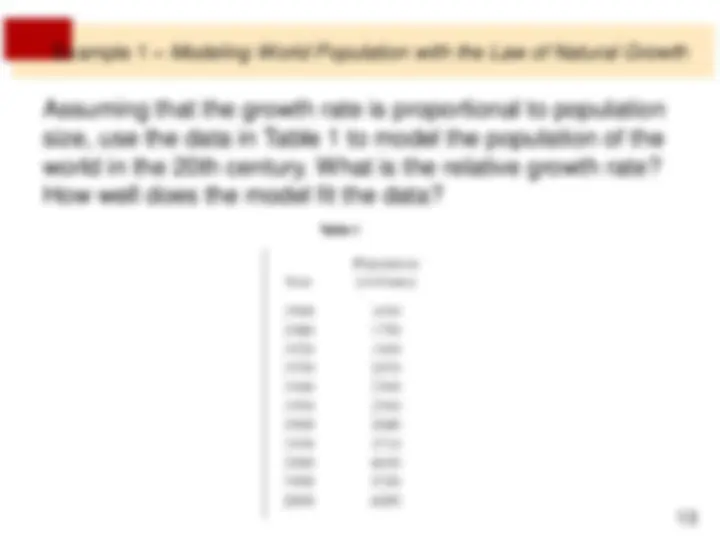
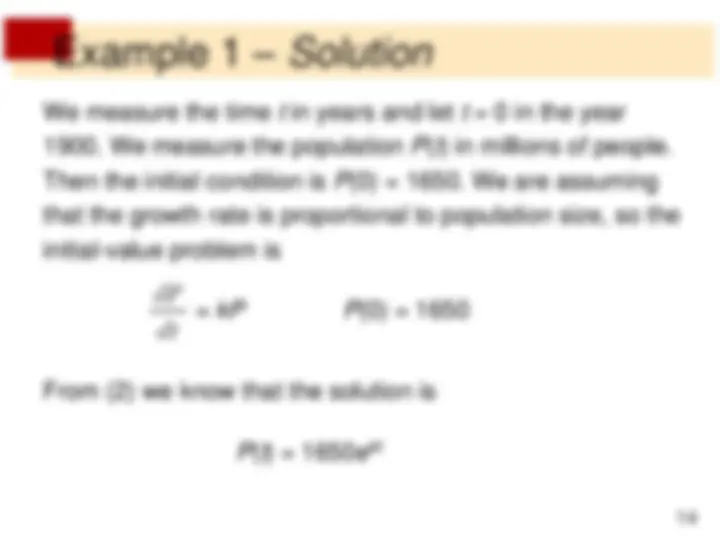
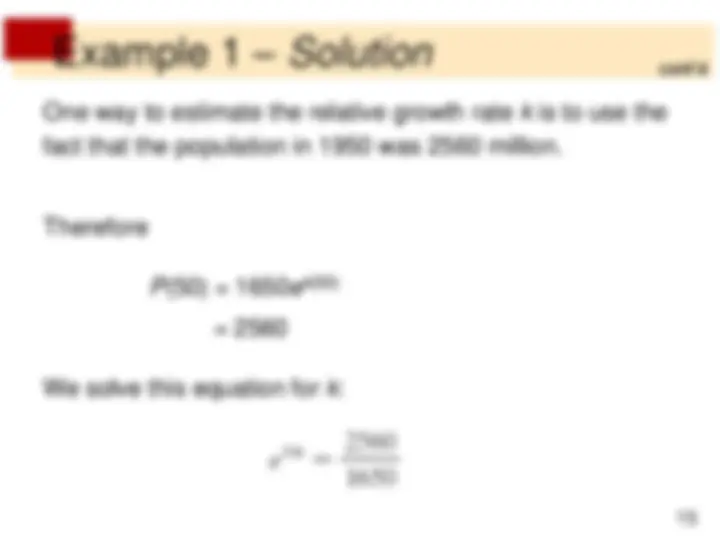
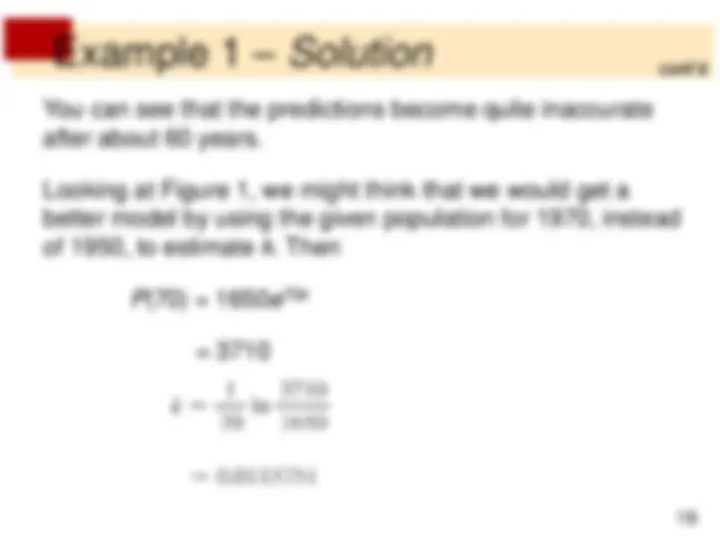
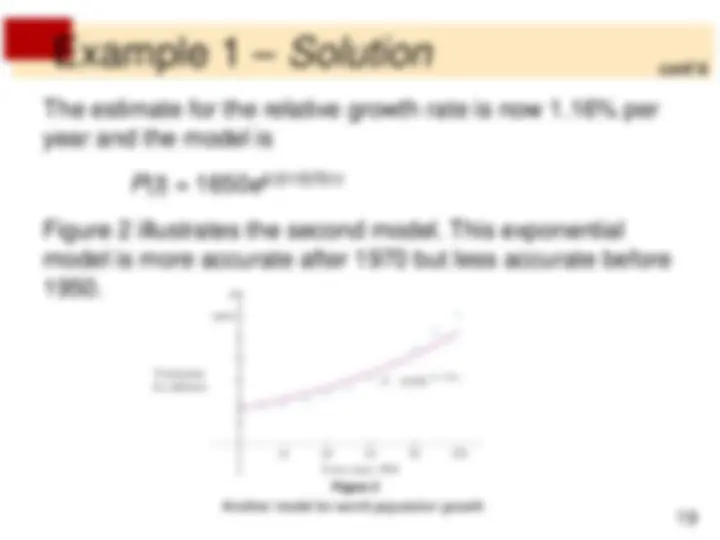
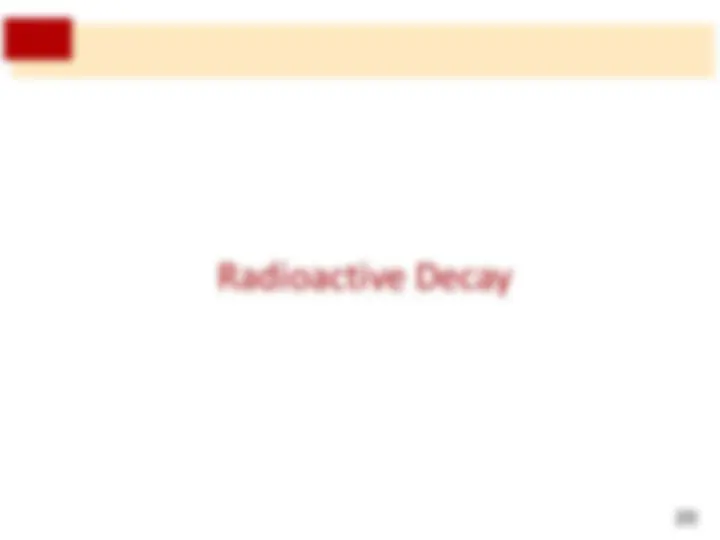
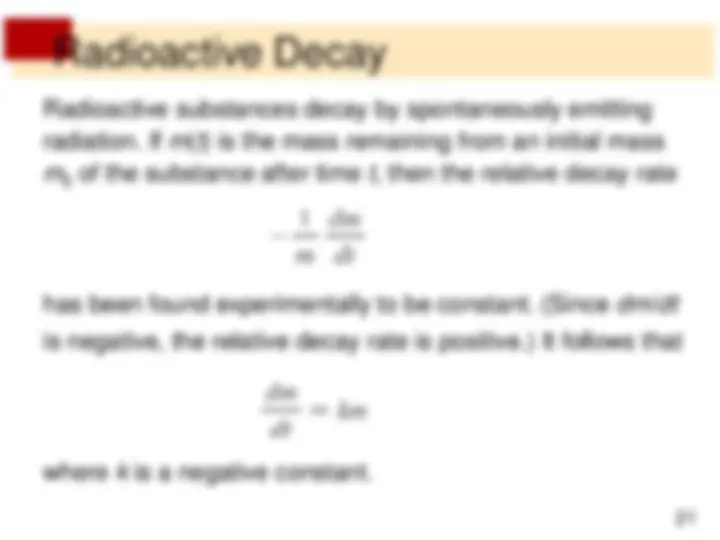

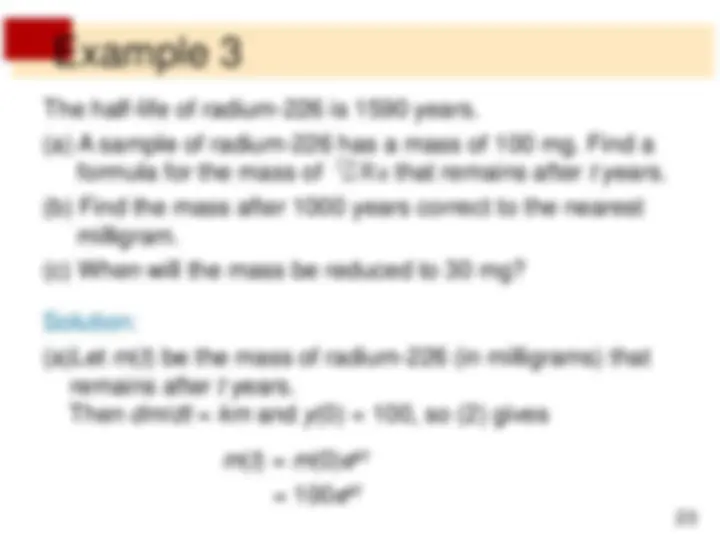
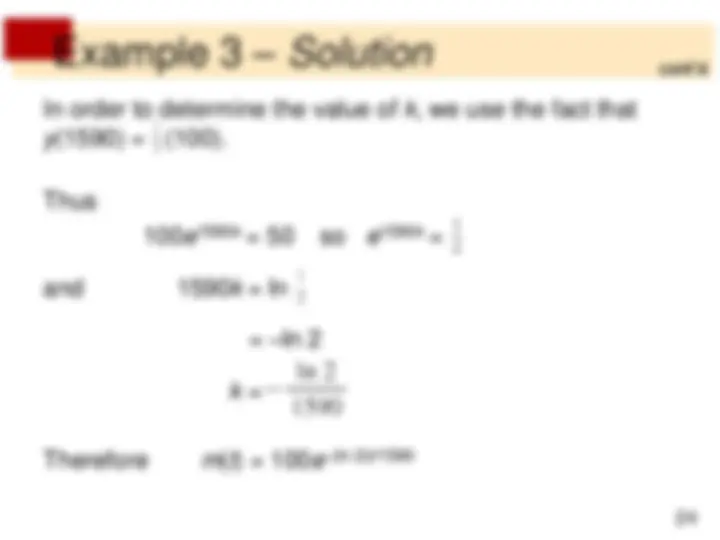
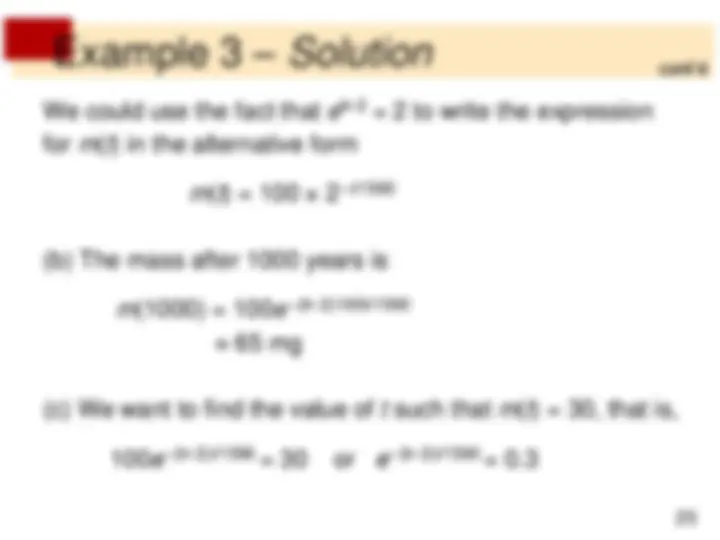
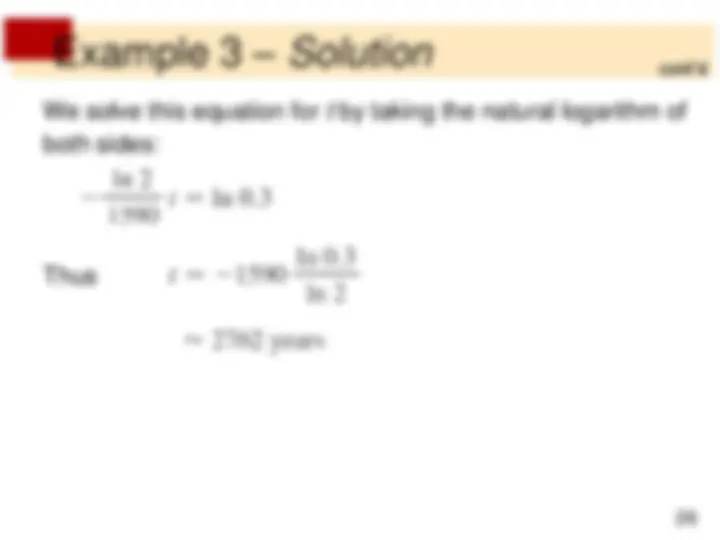
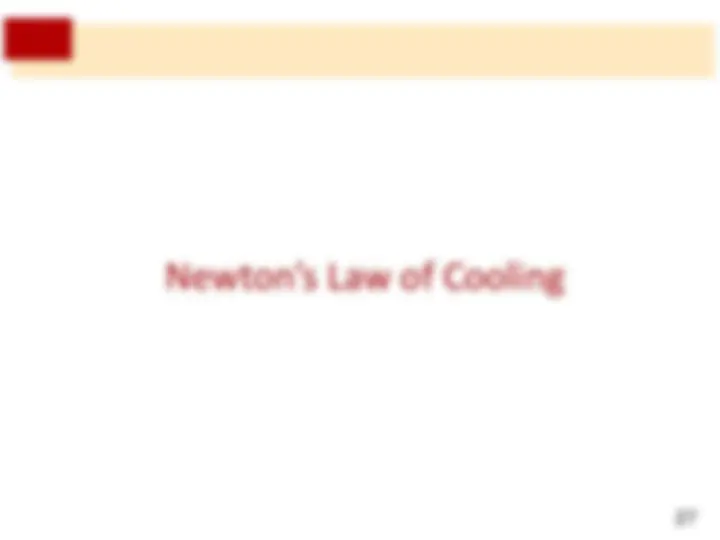
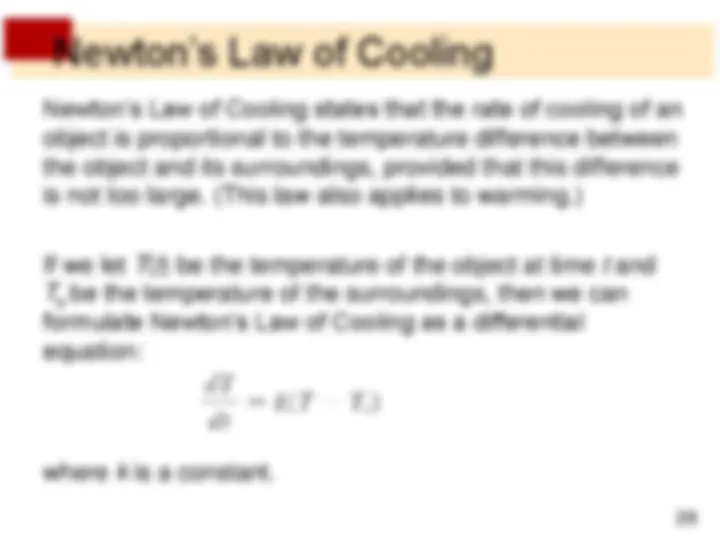
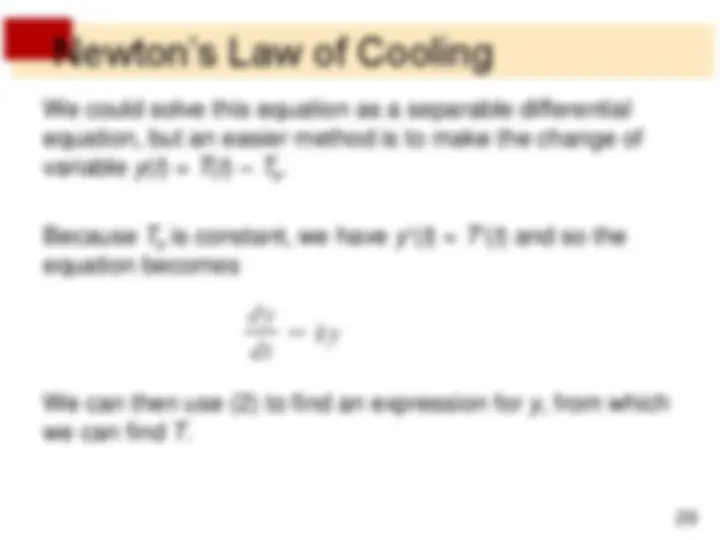
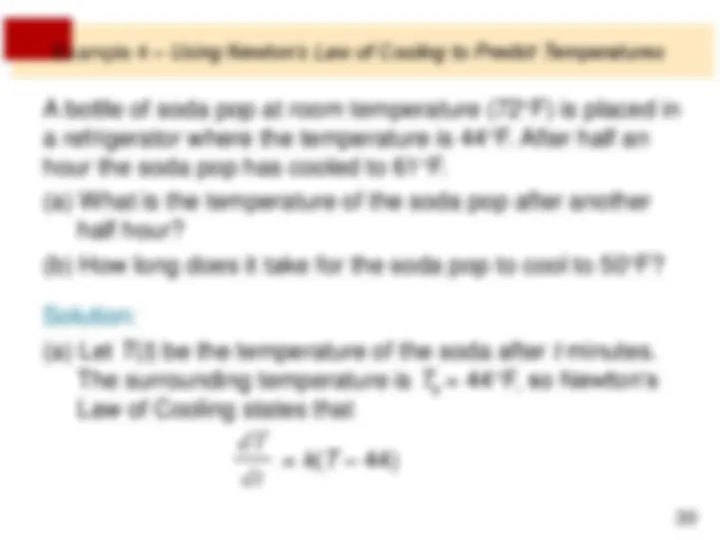
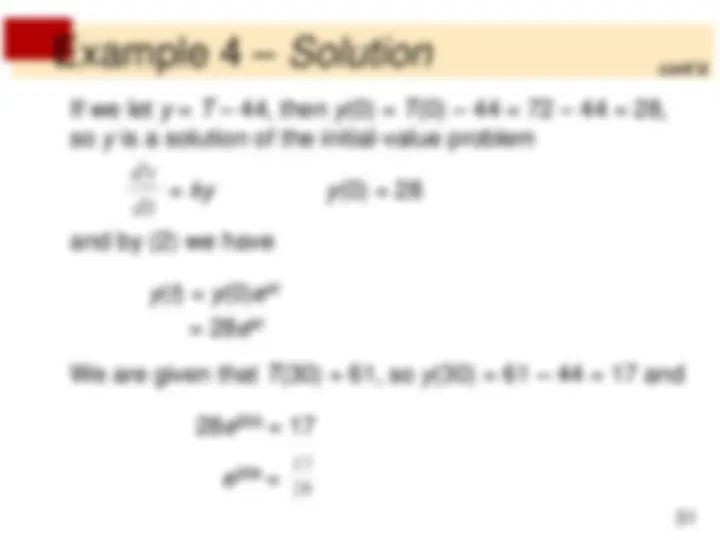
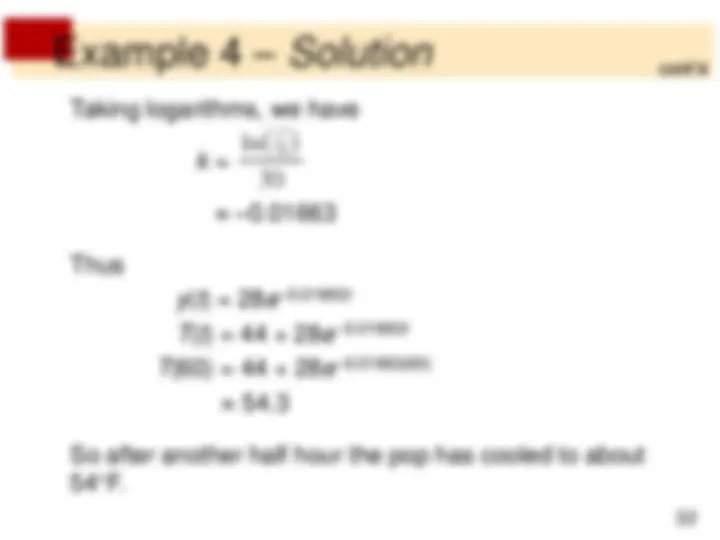
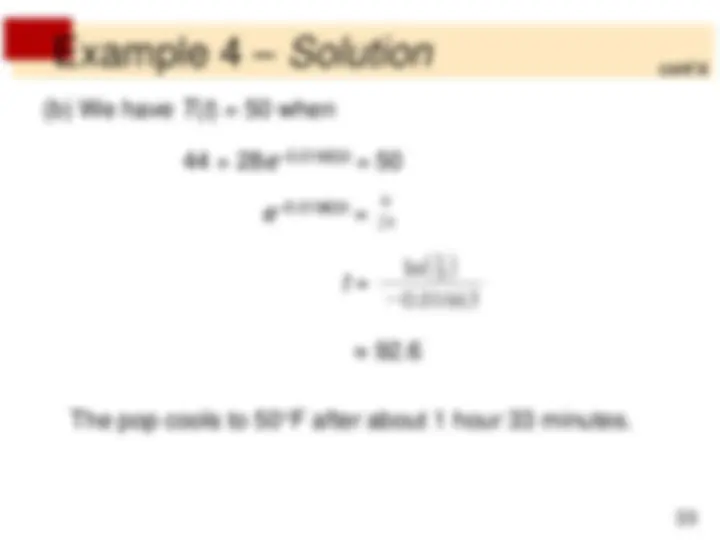
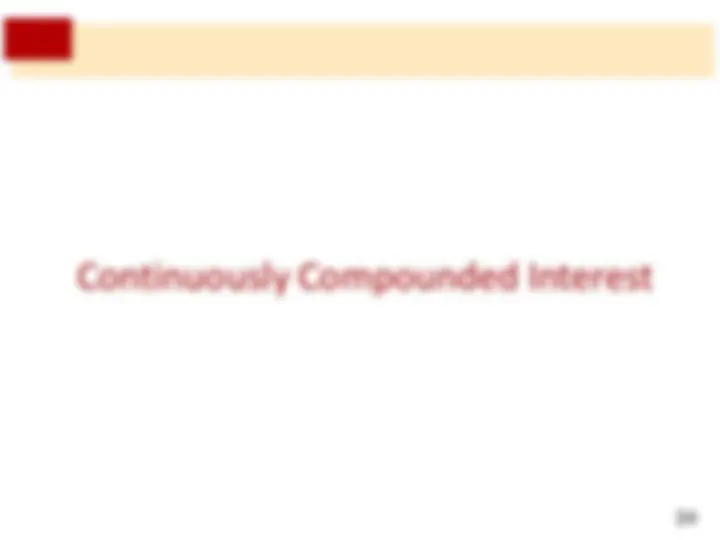
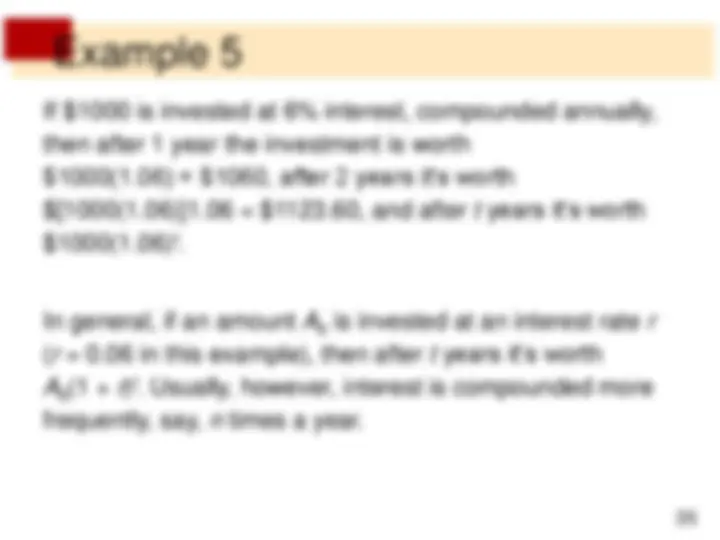
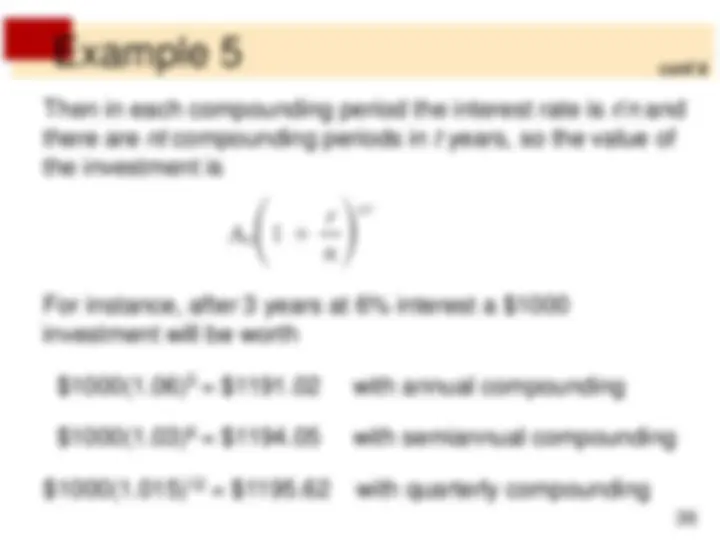
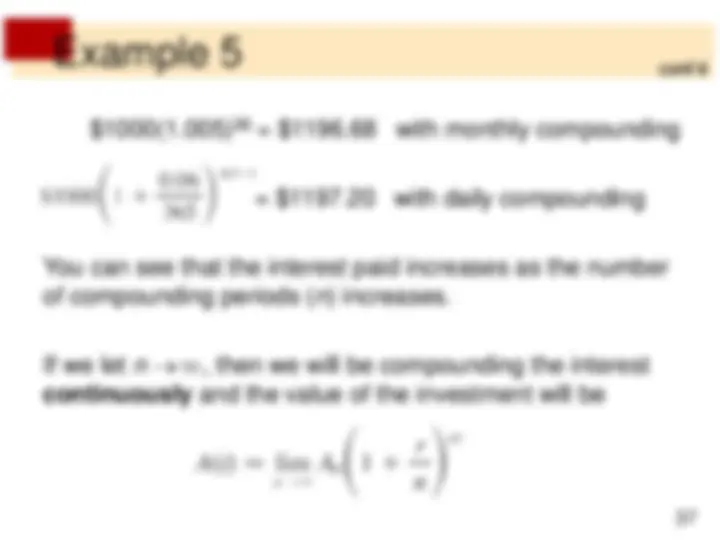
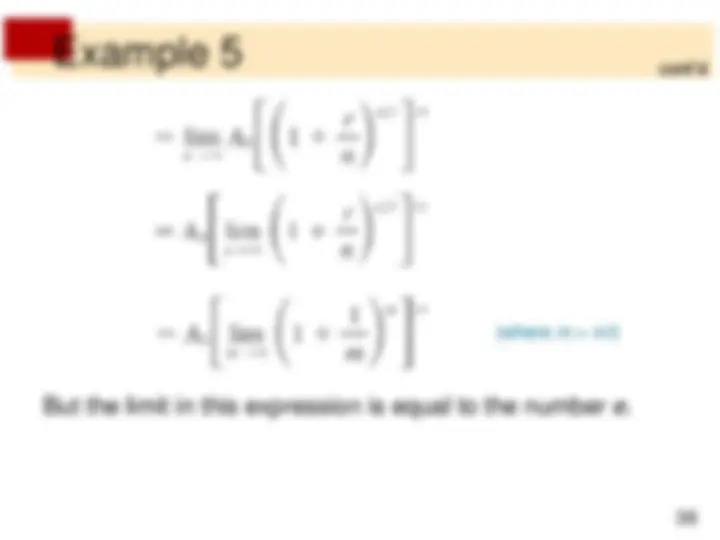
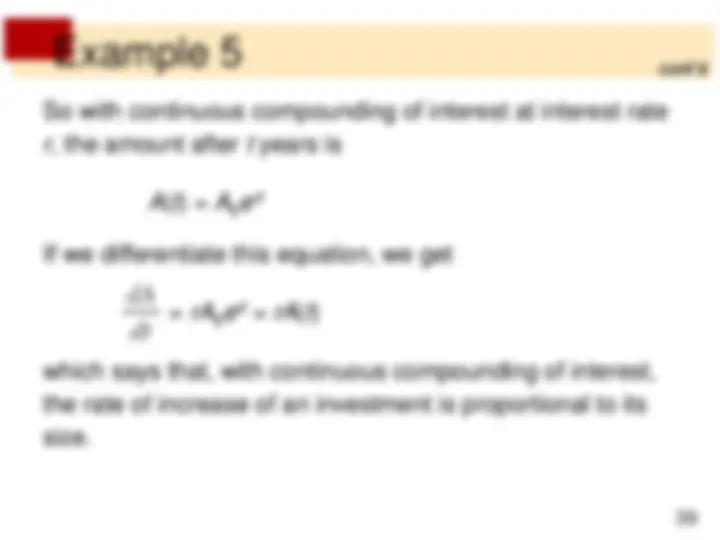
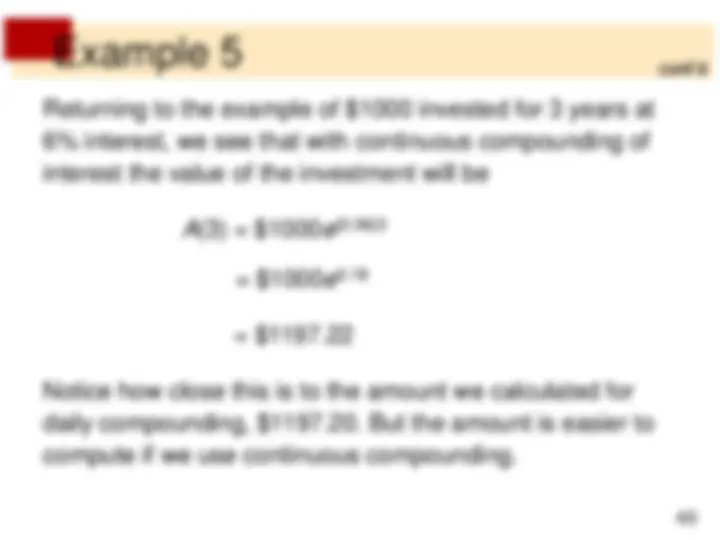


Study with the several resources on Docsity

Earn points by helping other students or get them with a premium plan


Prepare for your exams
Study with the several resources on Docsity

Earn points to download
Earn points by helping other students or get them with a premium plan
Community
Ask the community for help and clear up your study doubts
Discover the best universities in your country according to Docsity users
Free resources
Download our free guides on studying techniques, anxiety management strategies, and thesis advice from Docsity tutors
The concept of exponential growth and decay in various contexts, including population growth, radioactive decay, and Newton's Law of Cooling. equations and examples to help understand how the rate of change is proportional to the size of the quantity in each situation.
Typology: Study notes
1 / 40

This page cannot be seen from the preview
Don't miss anything!

































Differential Equations
Now let’s take another 1000 bacteria of the same type and put them with the first population. Each half of the new population was growing at a rate of 300 bacteria per hour. We would expect the total population of 2000 to increase at a rate of 600 bacteria per hour initially (provided there’s enough room and nutrition). So if we double the size, we double the growth rate. In general, it seems reasonable that the growth rate should be proportional to the size.
The same assumption applies in other situations as well. In nuclear physics, the mass of a radioactive substance decays at a rate proportional to the mass. In chemistry, the rate of a unimolecular first-order reaction is proportional to the concentration of the substance. In finance, the value of a savings account with continuously compounded interest increases at a rate proportional to that value.
ln | y | = kt + C |y | = e kt+C = e C e kt y = Ae kt where A (= e C or 0) is an arbitrary constant. To see the significance of the constant A , we observe that y (0) = Ae k 0 = A Therefore A is the initial value of the function.
Because Equation 1 occurs so frequently in nature, we summarize the following.
What is the significance of the proportionality constant k? In the context of population growth, we can write or The quantity is the growth rate divided by the population size; it is called the relative growth rate.
According to (3), instead of saying “the growth rate is proportional to population size” we could say “the relative growth rate is constant.” Then (2) says that a population with constant relative growth rate must grow exponentially. Notice that the relative growth rate k appears as the coefficient of t in the exponential function y 0 e kt .
Example 1 – Modeling World Population with the Law of Natural Growth Assuming that the growth rate is proportional to population size, use the data in Table 1 to model the population of the world in the 20th century. What is the relative growth rate? How well does the model fit the data? Table 1
We measure the time t in years and let t = 0 in the year
Thus the relative growth rate is about 0.88% per year and the model becomes P ( t ) = 1650 e 0.0087846 t cont’d
Table 2 and Figure 1 allow us to compare the predictions of this model with the actual data. cont’d Figure 1 A possible model for world population growth Table 2
The estimate for the relative growth rate is now 1.16% per year and the model is P ( t ) = 1650 e 0.0115751 t Figure 2 illustrates the second model. This exponential model is more accurate after 1970 but less accurate before
cont’d Figure 2 Another model for world population growth